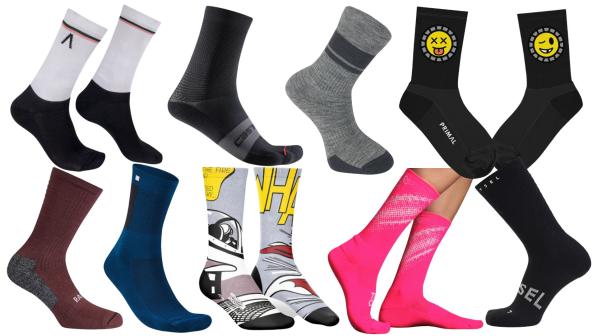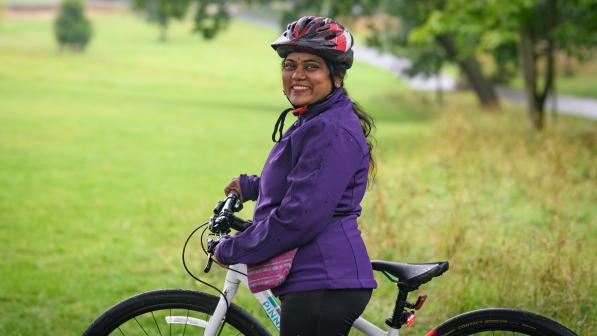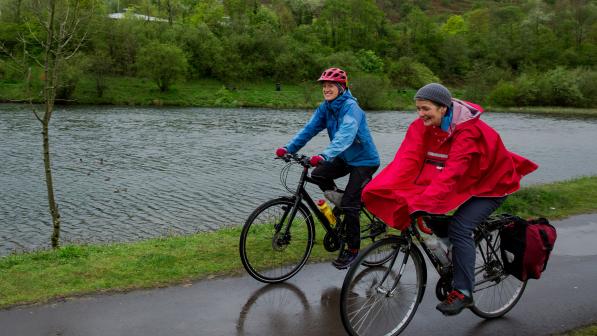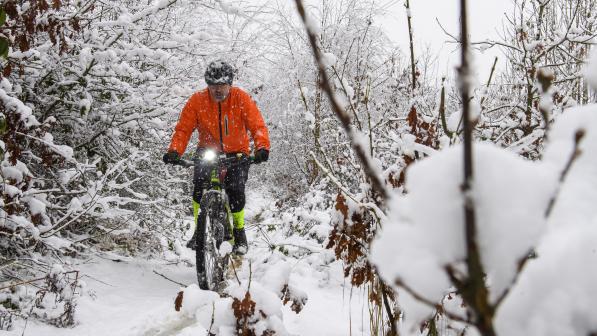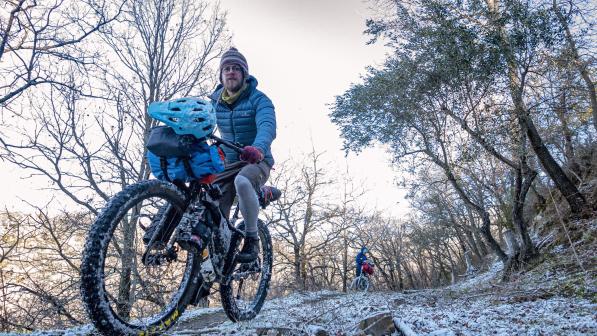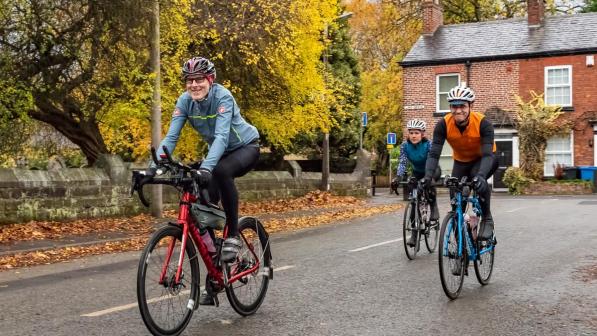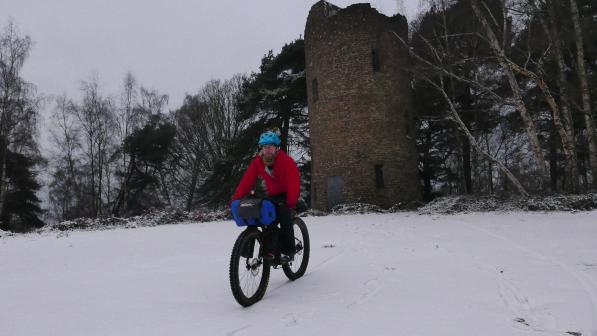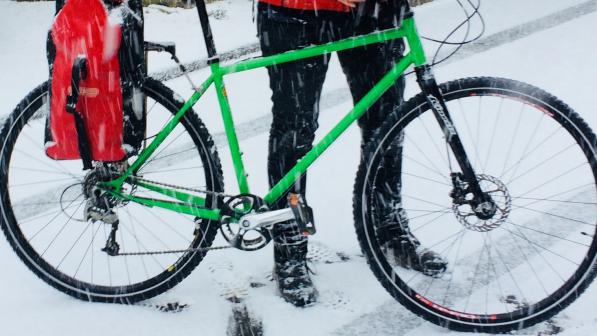How to keep your fingers and toes warm when cycling

Many of us are digging out our winter clothes and looking for the best ways to stay warm while cycling through the colder months. This is especially true for people with Raynaud’s disease.
What is Raynaud’s disease?
According to Scleroderma & Raynaud’s UK (SRUK), “when our bodies are exposed to the cold, a normal response is for the blood vessels to become narrower. When someone has Raynaud’s this reaction may be much more extreme”. This particularly impacts our extremities, most commonly the hands, feet, fingers and toes.
This can result in severe discomfort when the temperature changes. A Raynaud’s attack can cause “a noticeable colour change to the affected areas, with the skin turning white, then blue and finally to red as the circulation returns”. Other symptoms include numbness in these affected areas, followed by tingling or pain.
Cycling with Raynaud’s
Winter cycling means huge challenges for Raynaud’s sufferers. For Roland Seber, just operating brake and gear levers can be a struggle. With symptoms ranging from numbness and aching to severe pain and swelling, certain measures need to be taken to still cycle year round.
“I have been known to cry on a ride because of it,” says Sara Nanayakkara. She describes having to carefully plan what to wear for a ride, and to know her triggers. “I’ve started writing down temperatures I go out in, noting what I wore to help me build up data and knowledge of what works for me.” Now Sara has a way of quickly checking which items and tactics are needed for a ride on any given day.
For Sonia, the biggest barrier to winter cycling is the inevitability of a roadside mechanical. “I’ve tried it enough times to know not to bother any more”, she says. After years of trying different tactics, Sonia has decided to spend less time on the bike during winter months for this reason.
But what if you don’t want to change your cycling routine in the winter? If you’re looking for the best ways to keep your extremities warm, whether you suffer from Raynaud’s disease or not, Roland, Sara and Sonia have offered up some useful advice.

How to keep your fingers warm
Layer up
Both Sonia and Sara advise wearing two sets of gloves, which traps air between layers and insulates well.
Sara opts for Rapha winter gloves, which she pairs with thinner merino liner gloves. Merino wool has incredible thermoregulation properties: even when wet, it continues to insulate. It’s antimicrobial too, so it stays fresh for longer between washes.
Heated gloves
Sonia deploys heated gloves when the temperature reaches around 5 degrees Celsius. These contain an integrated heating element powered by a rechargeable battery, and some can have a run-time of up to six hours on a single charge.
Roland also opts for these, and recommends Warmawear gloves for temperatures around 2 degrees or lower. These heated glove liners could be worn alone or beneath some larger outer gloves when things get really frosty.
Go windproof
Sonia really stresses the importance of windproof outer gloves, since they’re impervious to the cold. Unlike thick, padded winter gloves, they also provide much-needed dexterity for braking and shifting gears. Ideally, look for materials like Gore Windstopper or WindTex, which also offer water repellency and breathability.
Hand-warmers
There are several hand-warming products on the market, some of which are air activated, and others are battery powered. Take them on a long ride so you can warm your hands during a coffee stop.
Air-activated hand-warmers are single use, so Sara recommends the HotRox rechargeable electric hand-warmer as a more sustainable alternative.
How to keep your toes warm
It’s all about the socks
All three cyclists recommend double layering socks.
Sara opts for light cotton socks beneath her winter merino pair, which helps to trap air and warmth. However, although merino socks continue to insulate when wet, cotton has a tendency to lose its insulation properties once saturated with water, so if you choose to double-up with cotton, make sure you take measures to keep your feet dry.
Sonia wears silk liners underneath her DeFeet Woolie Boolie socks. Silk is lightweight, so it doesn’t add bulk beneath your cycling shoes, and provides natural thermal insulation. It also wicks moisture away from the skin, so if you sweat, the combination of silk and merino will leave your feet feeling dry and fresh, while retaining their warmth.
Winter cycling shoes
Plenty of cycling brands produce winter cycling shoes and boots, which are designed to keep your feet warm and dry, and completely protected against the elements. Look for those with ankle cuffs, a protective layer over the laces, and impenetrable waterproof membranes.
“Footwear must be big enough, so your feet have room to move,” Sonia says. “Tight footwear causes problems and doesn’t keep your feet warm.” In the depths of winter, she relies on her 45NRTH Ragnarok shoes, which are specifically designed for wet and muddy conditions.
Overshoes
Sara recommends overshoes made from neoprene, the same material used in wetsuits. Just like a wetsuit, it won’t keep the water out, but as it becomes saturated, it continues to insulate your feet. For UK winters where rain is a regular feature, neoprene overshoes may be a saving grace for many.
Roland also opts for neoprene overshoes, and currently uses a pair of Halfords’ own brand overshoes. The only downside, he says, is that they don’t work well with flat mountain bike pedals, as the pins tear the underside. If this is an issue for you, Scottish brand Endura produces a pair of MT500 Plus overshoes specifically designed to be used with flat pedals.
Other hacks
There are lots of other winter-warmer hacks you can try, like covering any vents in your cycling shoes. With the exception of one or two brands, the majority of cycling shoes will have ventilation points to provide airflow. These may be on the upper fabric, or actually within the sole itself. Popular methods include duct taping over the vents, or stuffing them with Blu-Tack.
Covering the vents in your shoes not only keeps the rush of air out, but if you’re wearing neoprene overshoes, it also helps to stop the water from trickling in.
Sara recommends wrapping aluminium foil over your socks before putting your shoes on, as it creates a barrier to block heat from transferring away from your feet.
Another popular method, especially when it’s wet, is wearing plastic bags around the feet to seal in the warmth. Most commonly, cyclists sandwich the plastic bag between two layers of socks. An alternative method is to put the plastic bag next to the skin, beneath the sock layers. It might not feel very nice, but it’s rumoured to be very effective at trapping heat.
When to get medical help
There are two different types of Raynaud’s disease: Primary and Secondary. The first is unrelated to any other conditions, and is unlikely to develop into anything further. Even so, SRUK states that people with Primary Raynaud’s disease should still see their GP if they’re concerned about symptoms or any other health issues.
Secondary Raynaud’s disease develops from another condition, usually an autoimmune disease such as scleroderma or lupus. This requires careful monitoring, as it can cause complications like ulceration or sores. Stay in regular contact with your doctor, and report any change in symptoms or other health concerns immediately.
There is a licensed medicine that is commonly prescribed to help relieve symptoms of Raynaud’s. Your GP will be able to advise whether this is suitable for you.
Where to find support for Raynaud's
You should always consult your doctor if you have any symptoms or health concerns.
SRUK is a national charity that supports people with scleroderma and Raynaud’s, which can impact everyday life in several ways. It offers support groups throughout the UK, and has a hotline you can call, plus a ‘Keep in Touch’ support service.
